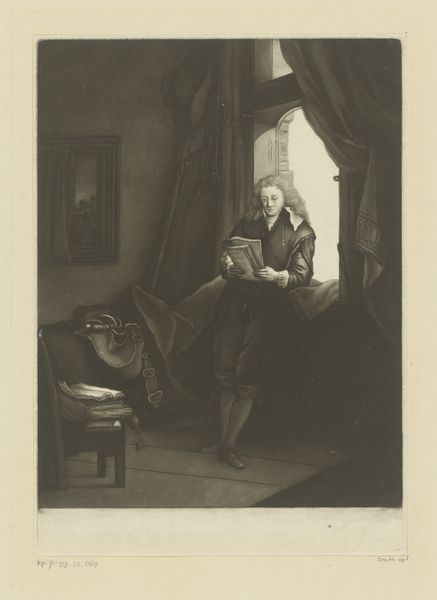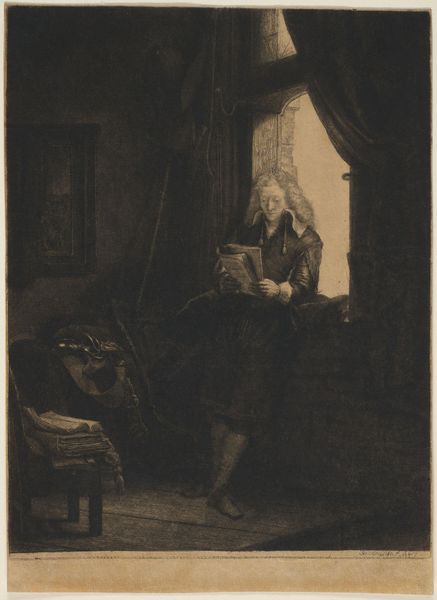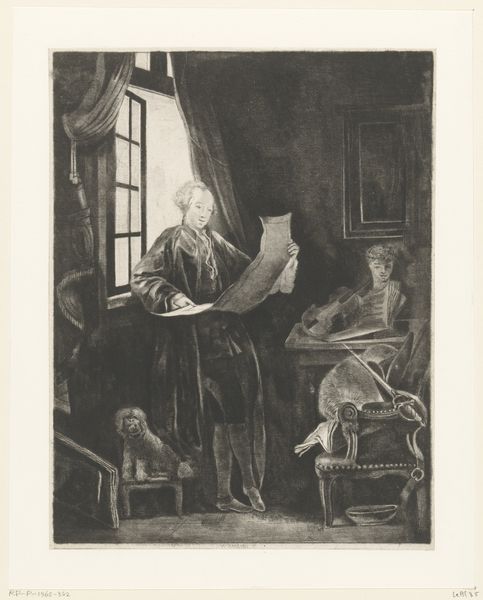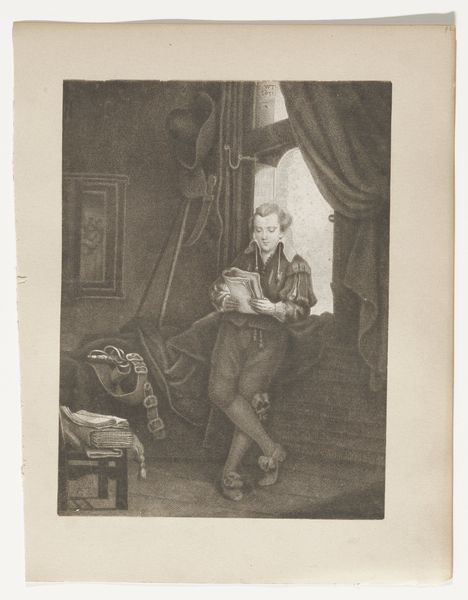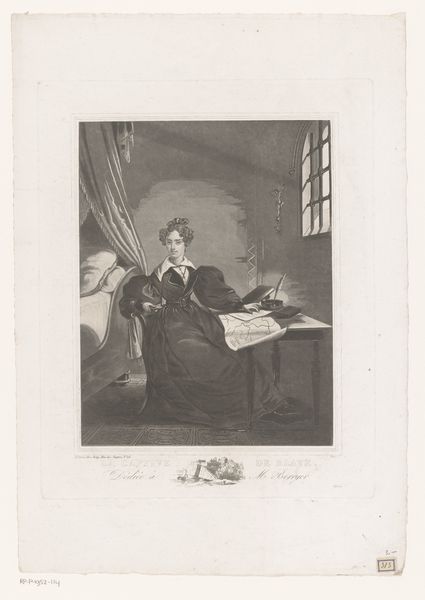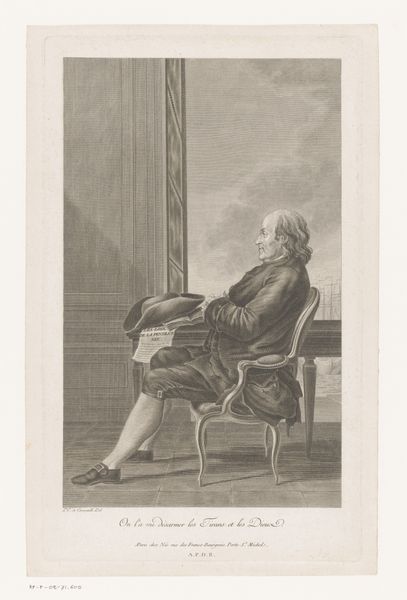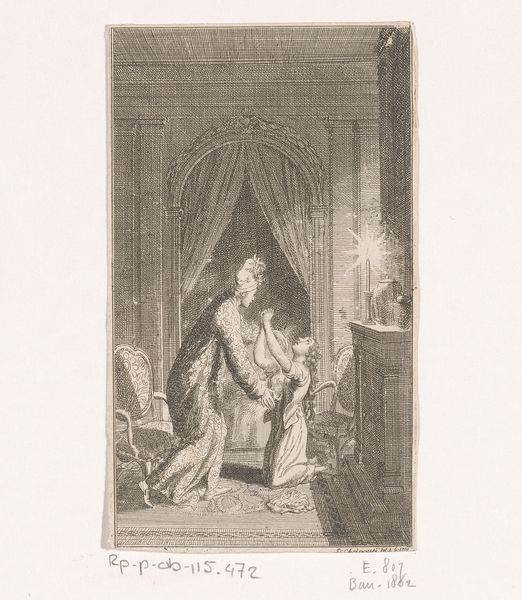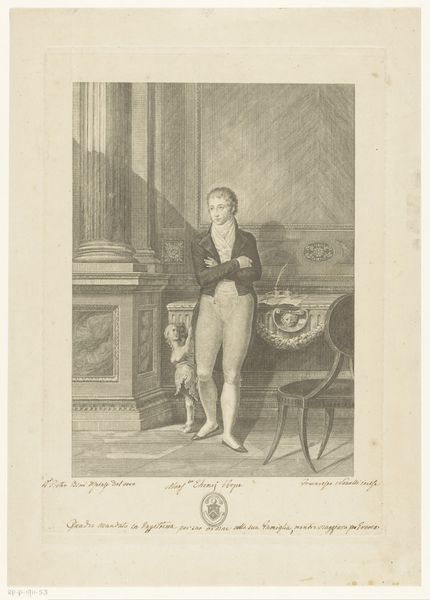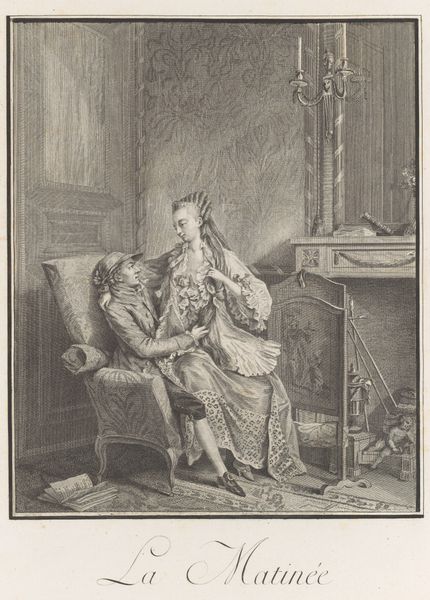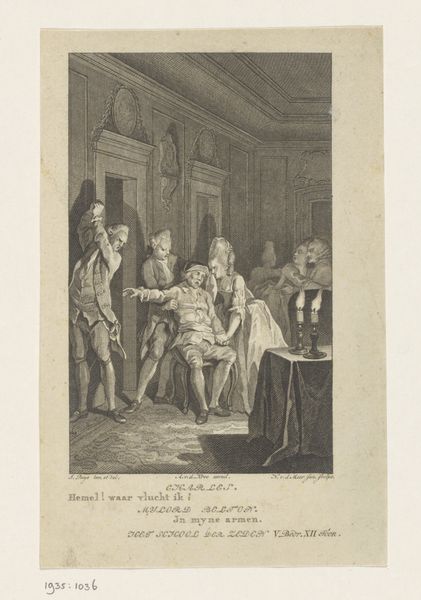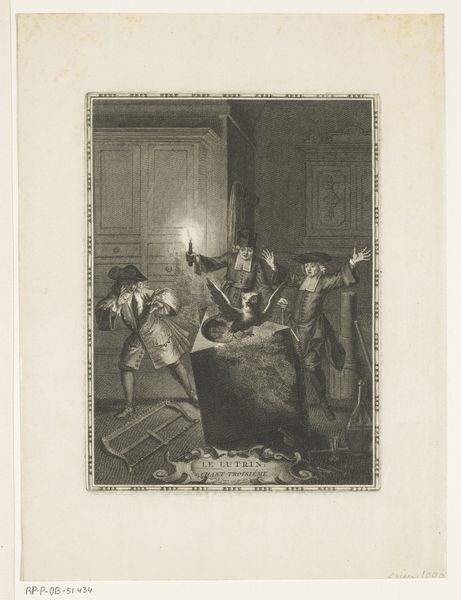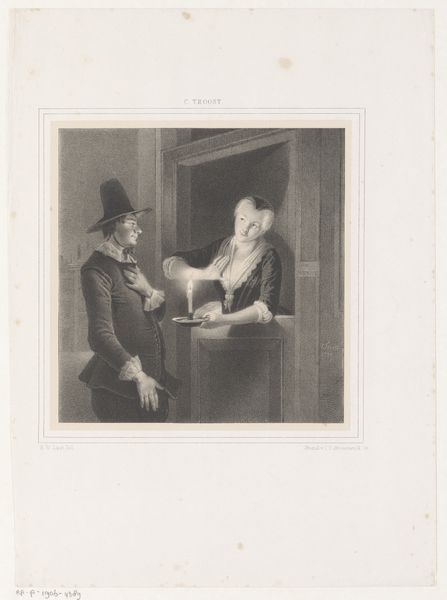
Dimensions: height 357 mm, width 255 mm
Copyright: Rijks Museum: Open Domain
Curator: Standing before us is an engraving entitled "Jan Six, Burgomaster of Amsterdam" by Richard Purcell, created sometime between 1762 and 1804. The artwork resides here at the Rijksmuseum. Editor: My first impression is one of quiet contemplation. There's a subdued drama, the subject illuminated as he's bathed in soft light near the window. It's as if we’ve caught him in a very private moment. Curator: Indeed, that's precisely the tone. While based on Rembrandt's original painting of the influential Jan Six, Purcell translates it through the visual language of print, which necessarily changes how the imagery functions culturally. Engravings were widely disseminated. This creates a public figure from a more exclusive painted portrait. Editor: The way symbols interweave, a helmet casually discarded, alongside the bound pages in his hand suggests shifting power structures—Jan Six as both intellectual and potentially a man of action or war. Does the helmet signify something specific in 18th-century culture? Curator: Precisely. While portraits were certainly status symbols for individuals and their families, publicly distributed images like this reinforced Six's role within Dutch civic life. The juxtaposition of the discarded armor suggests perhaps a leaning toward diplomacy over conflict. A choice between texts and the sword. Editor: I notice the subtle gradations of tone; it gives a sense of depth despite being an engraving. What symbolic weight might Jan Six have held for audiences who would have been familiar with the Dutch Golden Age and its legacy? Curator: Certainly, those seeing it might reflect on his cultural importance. Jan Six was an esteemed art collector and patron of the arts, whose status signaled prosperity and the continuity of Dutch cultural achievements and stability even as European geopolitics shifted during Purcell's era. The visual echo of Rembrandt, coupled with the details, all play into that narrative of national identity. Editor: It is fascinating to witness these symbols being recycled for future generations as they recontextualize what exactly history remembers or needs at the time of observation. The history-painting of political elites always brings many messages! Curator: Yes. How those emblems and associations are reconfigured over time reveals the evolution of the public sphere itself, demonstrating that symbols will hold changing cultural meanings that reveal more about each unique moment of reception.
Comments
No comments
Be the first to comment and join the conversation on the ultimate creative platform.
